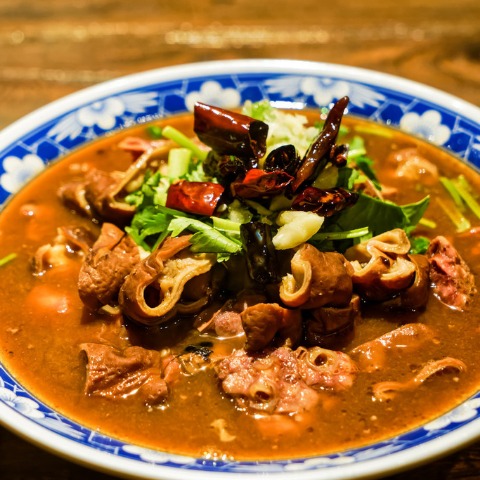
Beijing snacks include the snacks of many Chinese ethnic groups, such as the Han (汉族), Hui (回族), Mongol (蒙族) and Manchurian (满族), as well as imperial snacks from the Ming and Qing dynasties. They taste good and are inexpensive, which makes them very popular among Beijingers.
Sweet ears (糖耳朵,táng ěr duǒ)
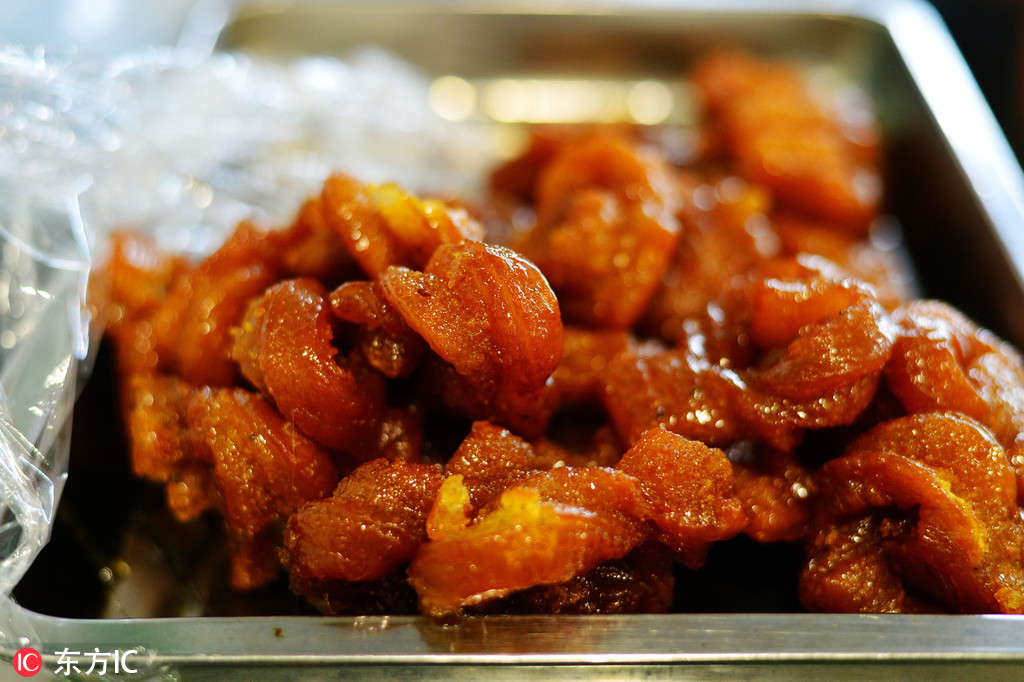
Sweet ears, or 糖耳朵, is a fried sugar cake of Islamic origins that gets its name from its shape. Made of flour and sugar, it is served cold and tastes sweet and soft.
Filled sausage (灌肠,guàn cháng)
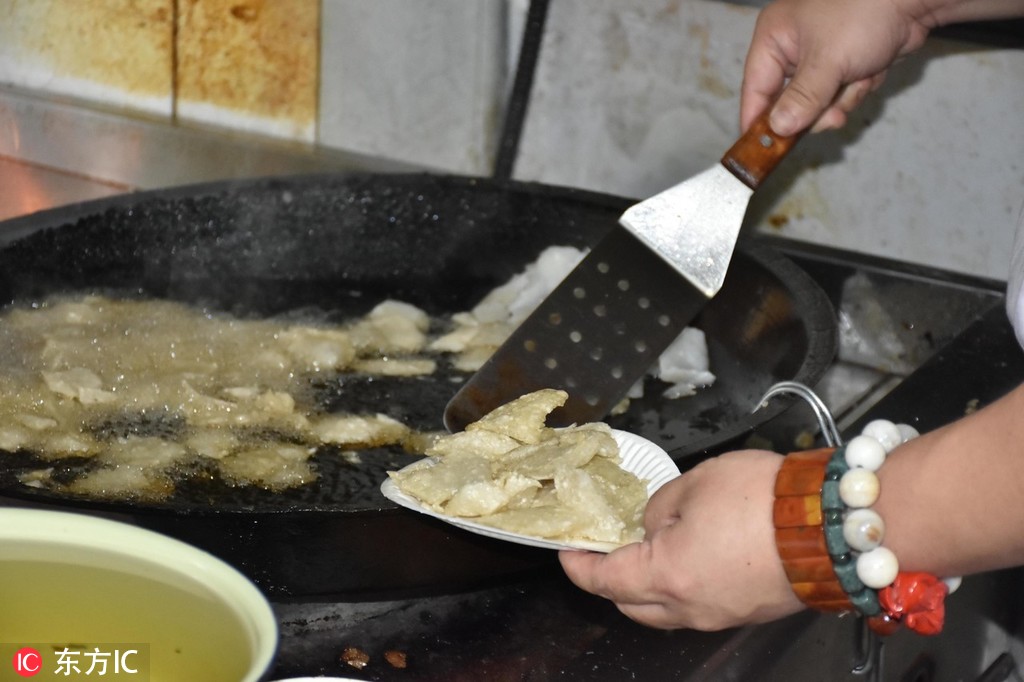
灌肠, or filled sausage, has been a popular snack in Beijing since the Ming Dynasty (1368-1644). Traditionally, the sausage, a prepared pork intestine (猪肠,zhū cháng), is stuffed with a paste of flour or starch mixed with spices. The sausage is then boiled and cut into cubes or slices to be fried. In some restaurants, minced pork is also used as stuffing (馅儿,xiàn er). Little bamboo sticks (竹签,zhú qiān), instead of chopsticks, are the traditional way of eating the filled sausages.
Stir-fried starch knots (炒疙瘩,chǎo gē da)
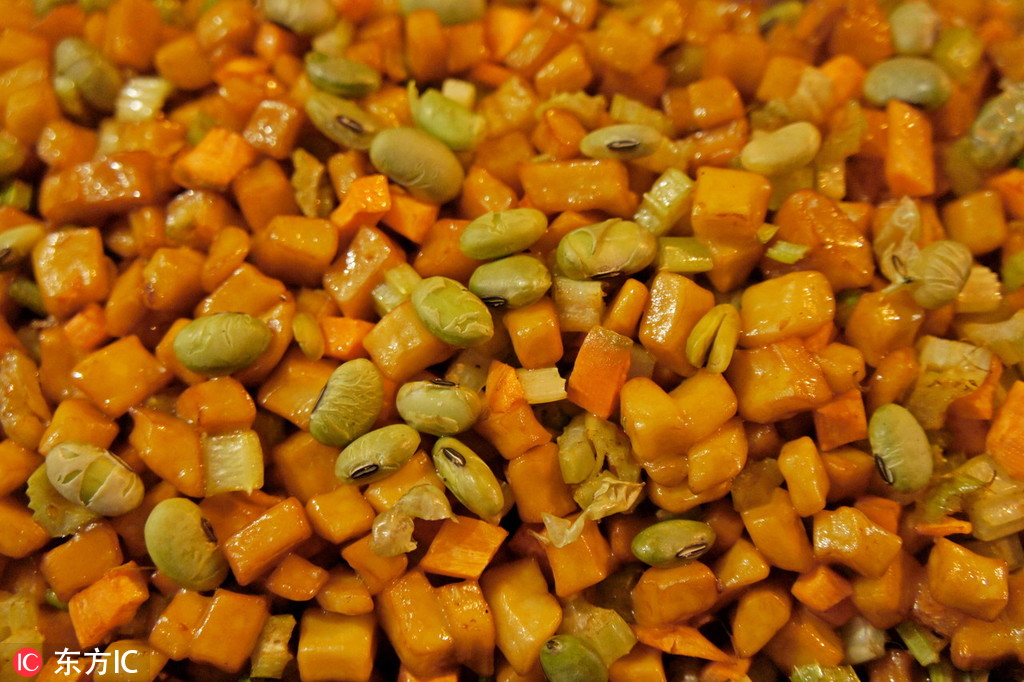
炒疙瘩 or stir-fried starch knots, is a kind of Chinese pasta. It was invented almost 100 years ago. The dough, made from wheat (小麦,xiǎo mài) and corn (玉米,yù mǐ) flour, is chopped, boiled in water and then immersed in cold water (冷水,lěng shuǐ). Fresh beef or chicken is sliced and stir-fried with oil and seasonings and then stir-fried again with the starch knots and various seasonal vegetables (时蔬,shí shū). The final product is a colorful and refreshing dish.
Fried wheaten pancake with fillings (褡裢火烧,dā lián huǒ shāo)
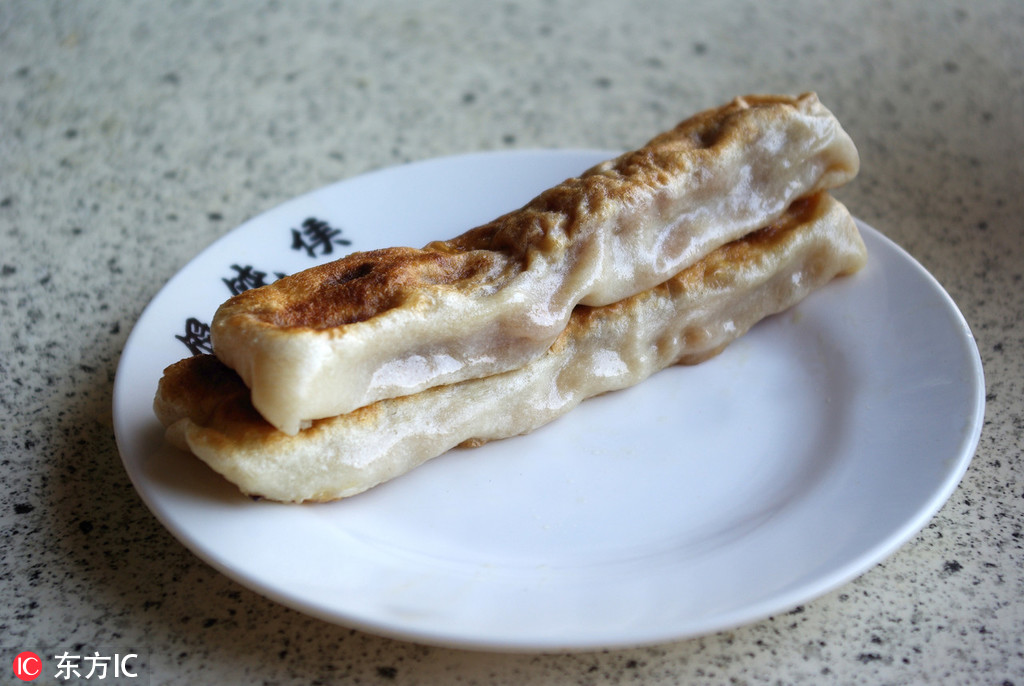
褡裢火烧, or fried wheaten pancake with fillings, is a pan-fried (煎制的,jiān zhì de) roll filled with different stuffings, including pork with fennel (猪肉茴香,zhū ròu huí xiāng), pork with cabbage (猪肉白菜,zhū ròu bái cài), lamb with green onion (羊肉大葱,yáng ròu dà cōng) and multiple vegetarian (素的,sù de) options. Its origins can be traced to the time of Emperor Guangxu (1662-1722) of the Qing Dynasty. The pancakes are fried golden brown, but they remain very soft and delicious. Like dumplings, they usually go with vinegar (醋,cù). Beijing locals like to eat the pancakes while having a bowl of sweet and sour soup made of chicken blood and tofu.
Rolling donkey (驴打滚,lǘ dǎ gǔn)
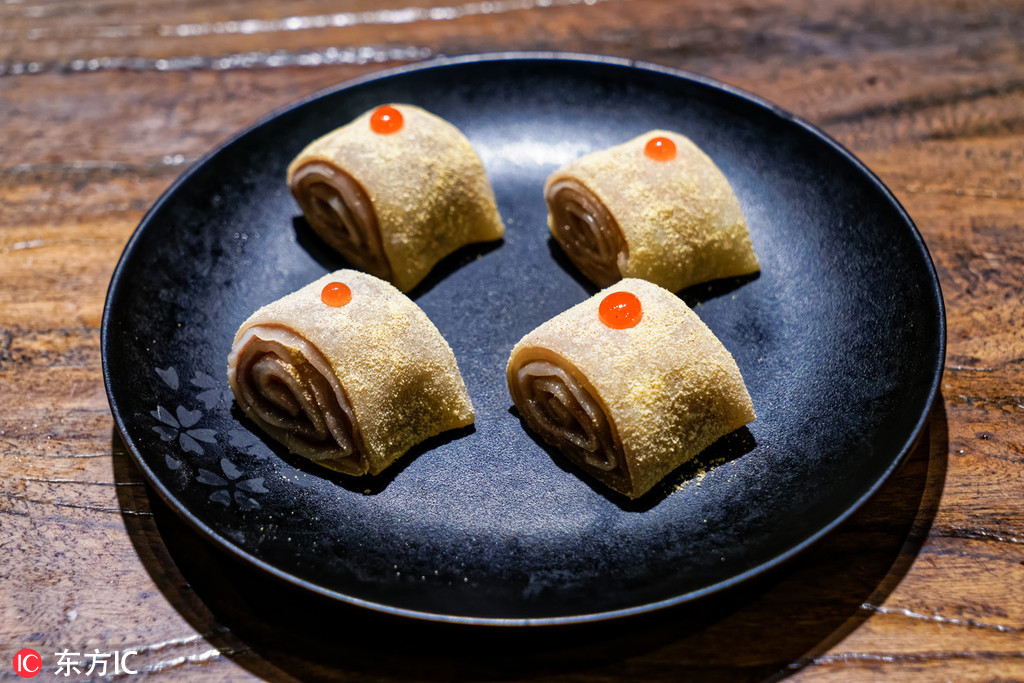
驴打滚 are steamed glutinous rice rolls filled with red bean paste (红豆沙,hóng dòu shā) or brown sugar (红糖,hóng táng) that is then rolled and covered in a soybean flour crumble. Its origins can be traced to the Qing Dynasty. The cake, which has a yellowish color, is sweet and a little sticky, with a very nice bean flavor.
Steamed rice cakes with sweet stuffing (艾窝窝,ài wō wo)
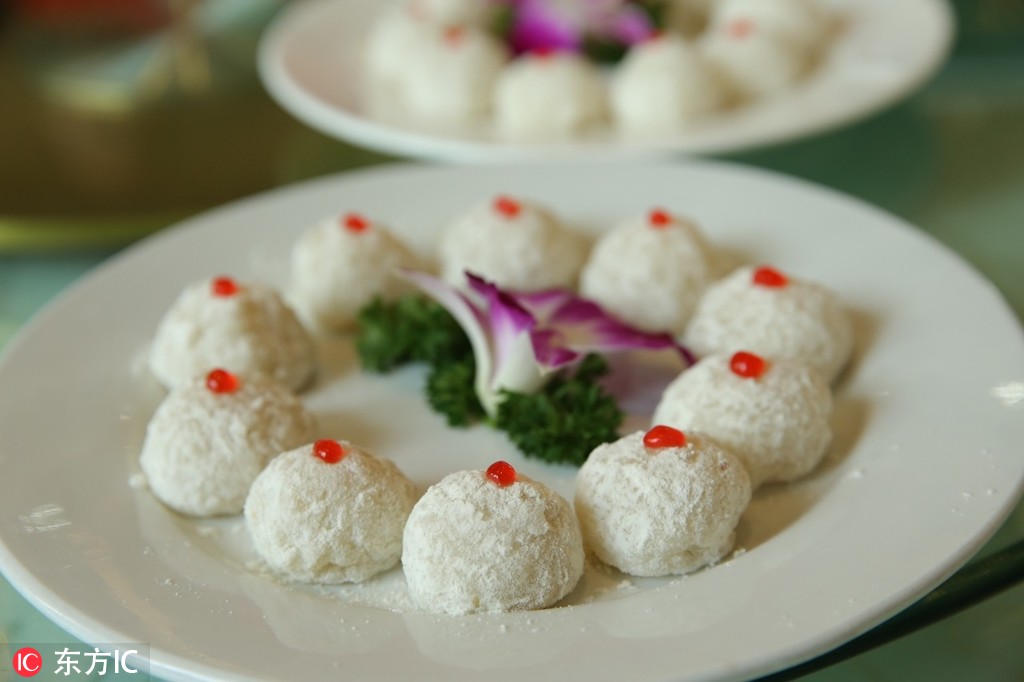
艾窝窝, or steamed rice cakes with sweet stuffing, is made of glutinous rice or millet flour (小米面,huáng mǐ miàn) with sweet filling. It first appeared during the Yuan Dynasty (1279-1368) and was a favorite of the imperial families of the Ming Dynasty. The cake, which has a sticky texture and is white as snow, tastes sweet and comes with a variety of stuffings, such as ground rock sugar (砂糖,shā táng), hawthorn (山楂,shān zhā), sesame (芝麻,zhī ma), green plum fruit (青梅,qīng méi) or mashed Chinese jujube (枣泥,zǎo ní). Traditionally, it is eaten from the Lunar New Year to the end of summer, but it is now sold throughout the year.
Fried beef tripe (爆肚,bào dǔ)
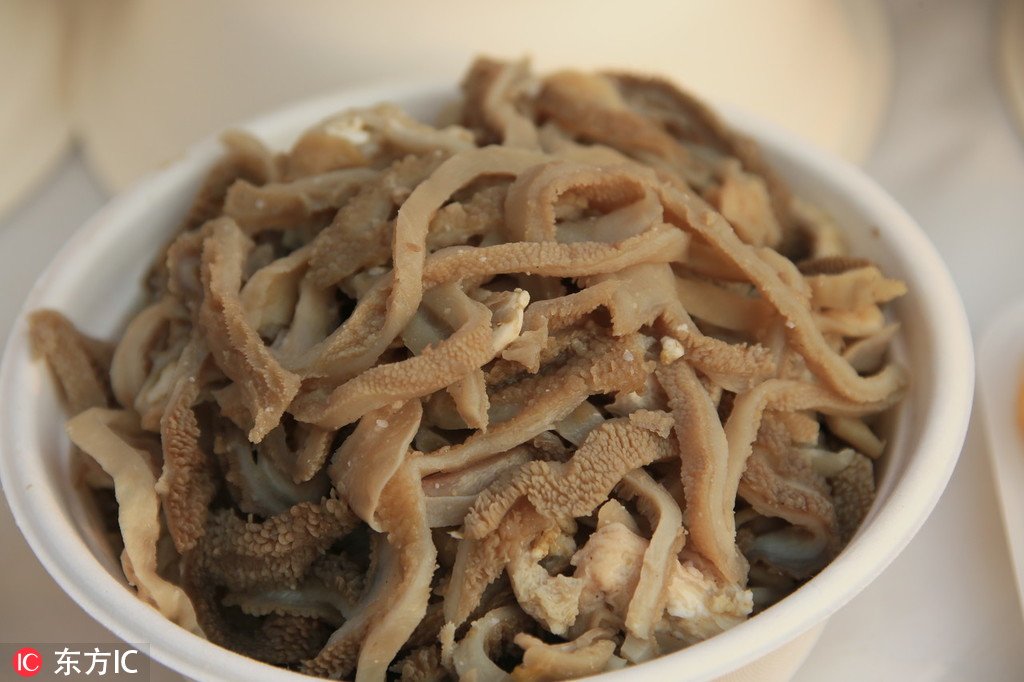
爆肚, or fried beef tripe, has been a famous Beijing snack since the time of Emperor Qianlong (1735-1795) of the Qing Dynasty. After being cleaned and cut into slices, fresh beef tripe (牛肚,niú dǔ) or lamb tripe (羊肚,yáng dǔ) is cooked in boiling water. It is often served with oil, sesame sauce (麻酱,má jiàng), vinegar, chili oil, soy sauce, fermented tofu juice, coriander, spring onion and other seasonings. It is tender and crispy, and people often eat it with beer or other alcohol.
Stewed pork liver (炒肝,chǎo gān)
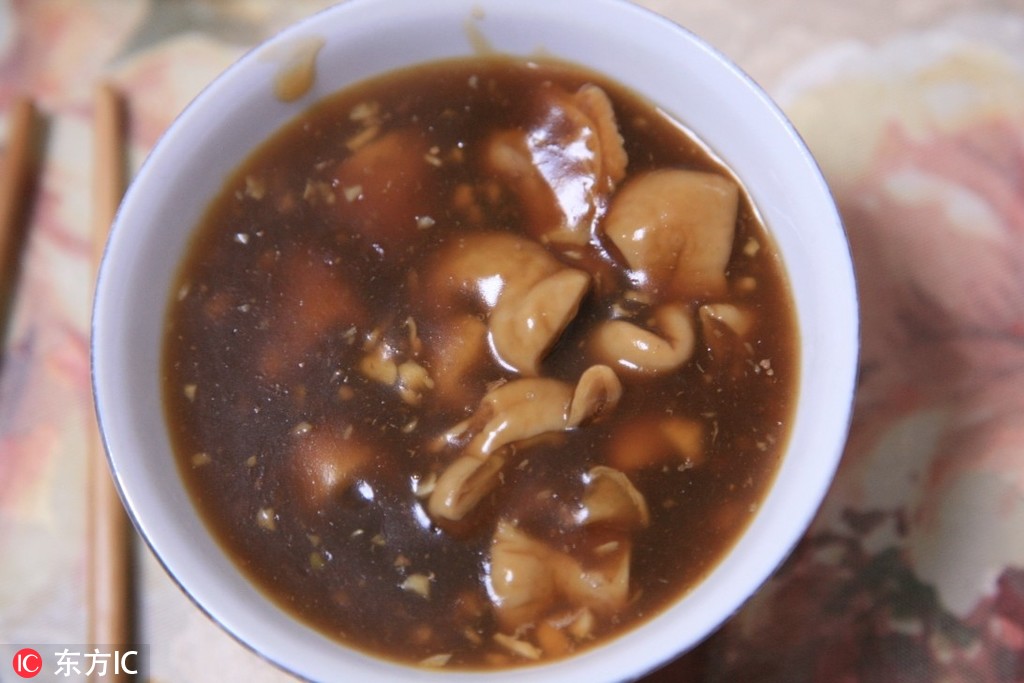
炒肝, or stewed liver, evolved from ao gan (stewed pork liver) and ao gei (stir-fried pork lung), both folk foods from the Song Dynasty (960-1279). The cleaned chitterlings are cut into pieces after being boiled in water. They are then stewed in mushroom soup with garlic sauce, chopped spring onion (葱花,cōng huā), chopped ginger and pork liver. Chicken soup (鸡汤,jī tāng) and mashed garlic (蒜泥,suàn ní) should be added before ready to serve. The soup is a glossy dark red and the pork liver and chitterlings are tender.
Wheaten cake boiled in meat broth (卤煮火烧,lǔ zhǔ huǒ shāo)
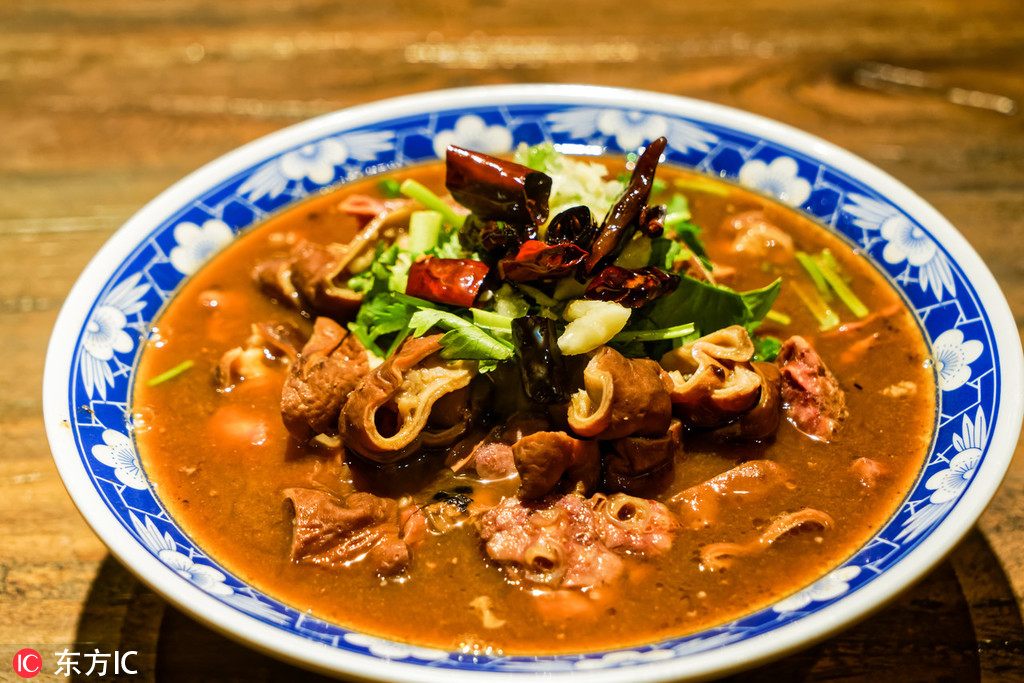
This traditional Beijing snack dates back 100 years to the Qing Dynasty (1644-1911). Baked wheaten bread, tofu, pork chop, chitterlings and pork lung (猪肺,zhū fèi) are cut into pieces and then boiled in the preserved meat broth. It is served with mashed garlic, chili oil, vinegar, fermented tofu, chives and coriander. Called “卤煮火烧” in Chinese, the snack gained popularity among commoners in ancient days because meat was too expensive while the offal was a cheaper option.
Mung bean milk (豆汁儿,dòu zhī er)
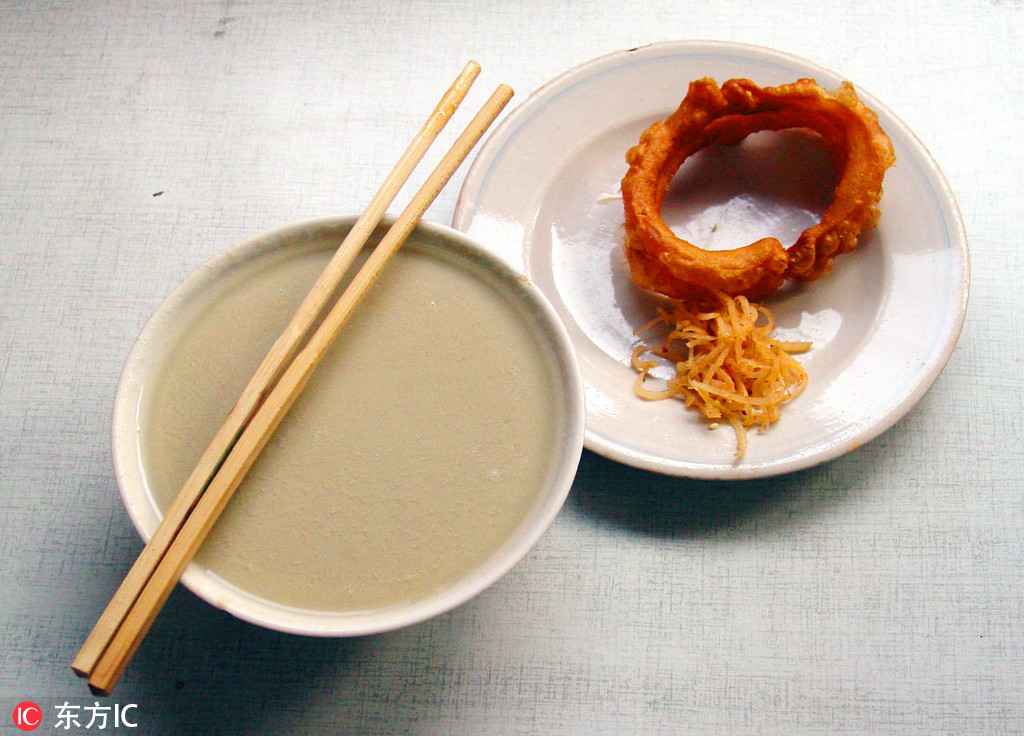
Mung bean milk is similar to soy milk (豆浆,dòu jiāng), except it is made from mung beans (绿豆,lǜ dòu). It is a gray-green color and tastes slightly sour and sweet, with an egg-like smell. Although mung bean milk does not look or smell appetizing, most Beijingers love to drink it, especially in spring and winter. It is a very healthy food, with lots of protein (蛋白质,dàn bái zhì), Vitamin C, fiber and sugar.
Source: China.org.cn
Editor: Jade
If you have any problems with this article, please contact us at app@chinadaily.com.cn and we'll immediately get back to you.